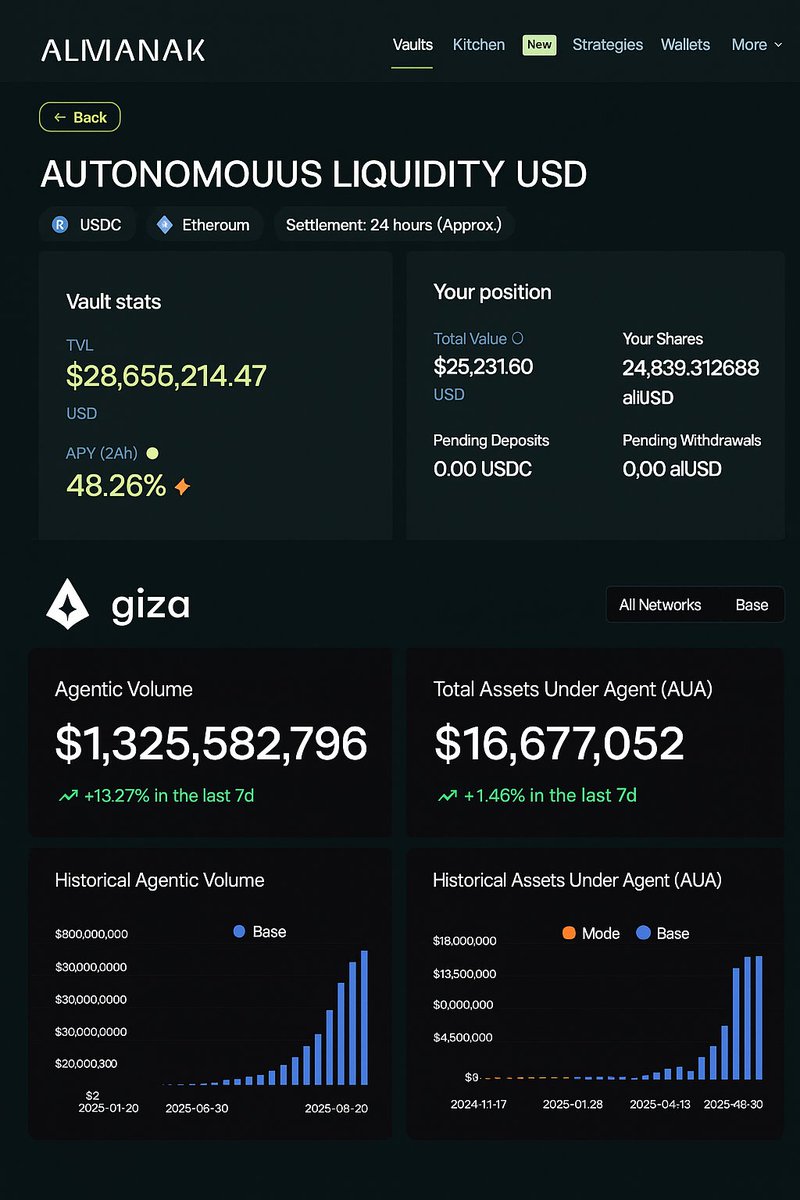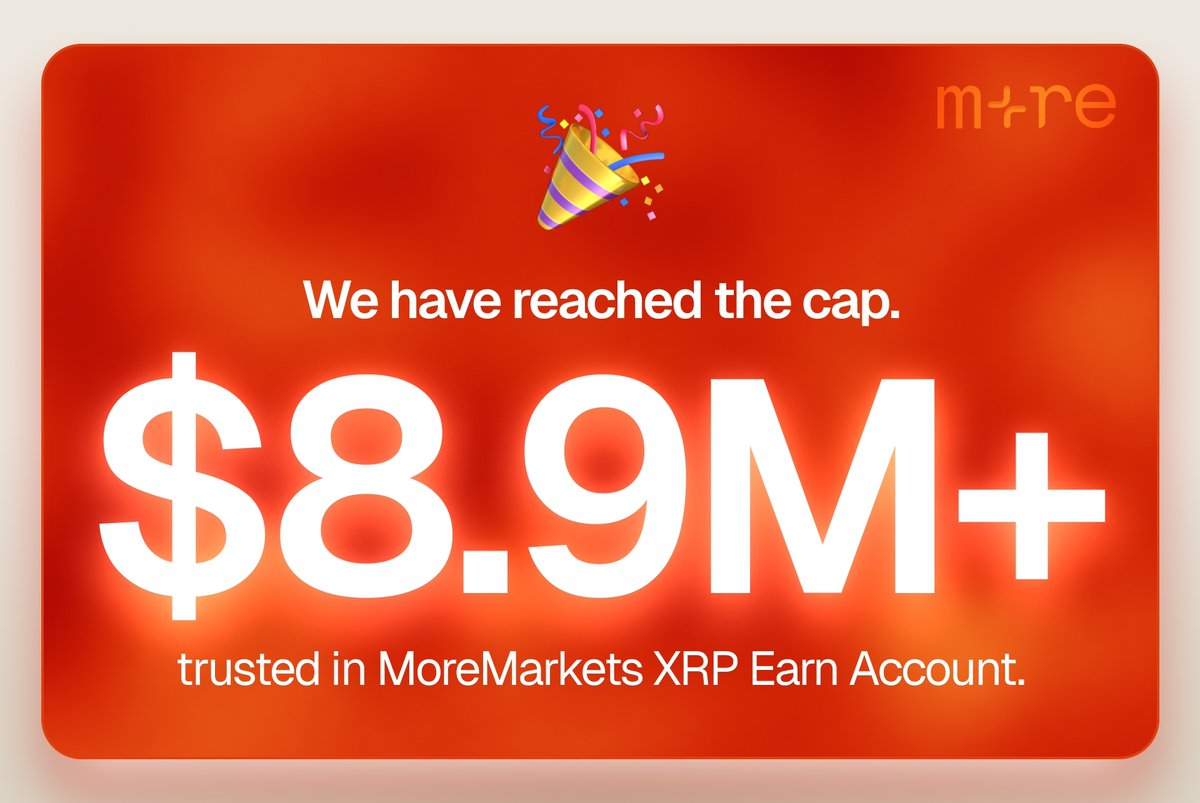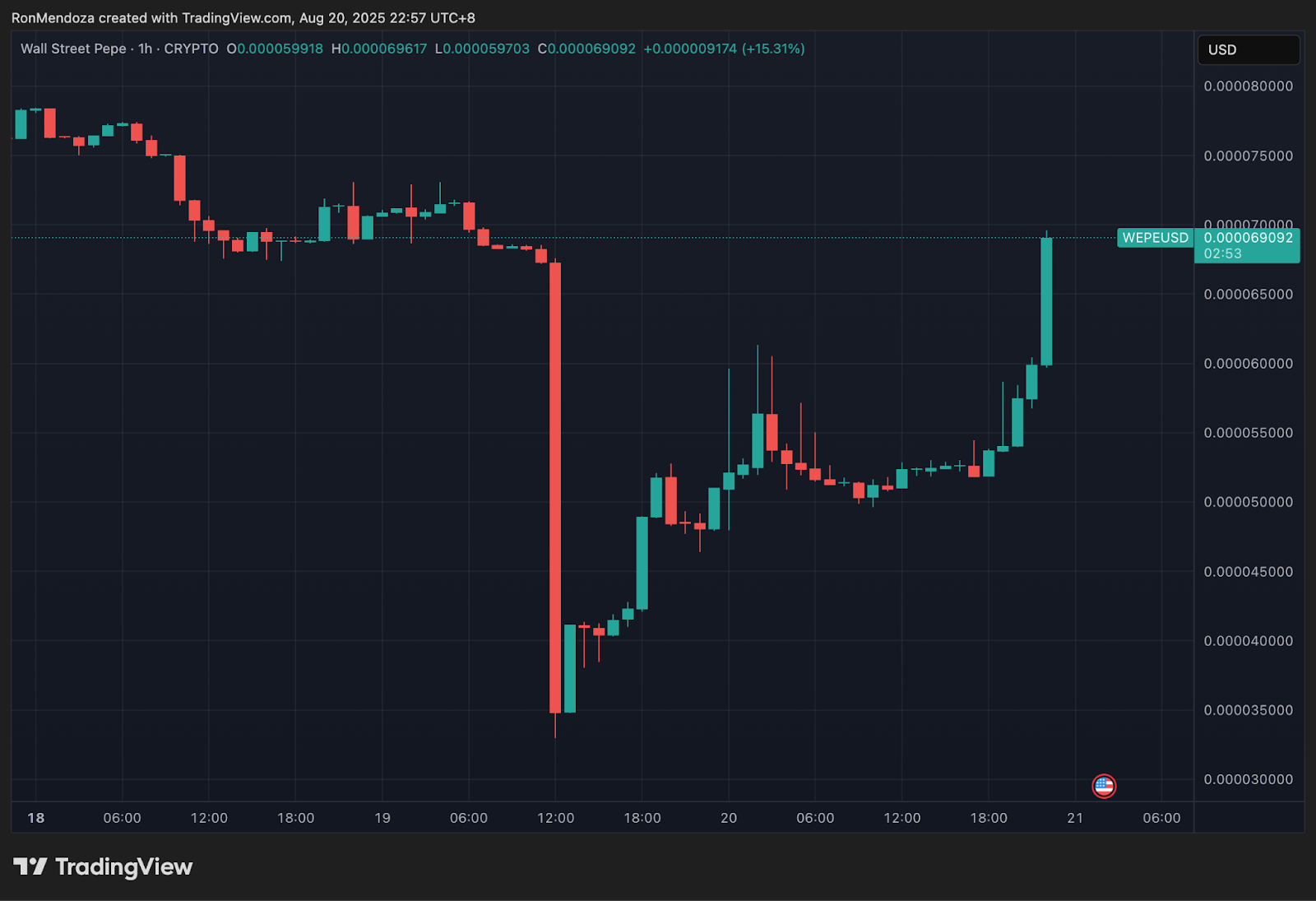Near Protocol-pris
i EUR

Om Near Protocol
Ansvarsfraskrivelse
OKX gir ikke anbefalinger om investering eller aktiva. Du bør vurdere nøye om trading eller holding av digitale aktiva er egnet for deg i lys av din økonomiske situasjon. Rådfør deg med din juridiske / skatte- / investeringsprofesjonelle for spørsmål om dine spesifikke omstendigheter. For ytterligere detaljer, se våre vilkår for bruk og risikoadvarsel. Ved å bruke tredjepartsnettstedet («TPN») godtar du at all bruk av TPN vil være underlagt og styrt av vilkårene på TPN. Med mindre det er uttrykkelig angitt skriftlig, er OKX og dets partnere («OKX») ikke på noen måte knyttet til eieren eller operatøren av TPN. Du godtar at OKX ikke er ansvarlige for tap, skade eller andre konsekvenser som oppstår fra din bruk av TPN. Vær oppmerksom på at bruk av TNS kan føre til tap eller reduksjon av eiendelene dine. Produktet er kanskje ikke tilgjengelig i alle jurisdiksjoner.
Prisutviklingen til Near Protocol
Near Protocol på sosiale medier









Veiledninger

Lag en gratis OKX-konto.
Sett inn penger på kontoen din.
Velg kryptoen din.
Near Protocol Vanlige spørsmål
Near Protocol er en banebrytende Layer 1-blokkjedeplattform, kjent for skalerbarhet og raske transaksjoner, tak i sharding-mekanismen.
Near Protocol har sharding, en teknik som deler nettverket i mindre segmenter (eller shards), noe som optimerer transaksjonshastighetene og den generelle nettverksytelsen.
Utforsk Near Protocol
I 2020 opplevde sektoren desentralisert finans (DeFi) betydelig vekst, noe som førte til en økning av desentralisert applikasjon (dApps) på Ethereum-nettverket. Denne økningen understreket noen av Ethereums skalerbarhetsutfordringer, og pekte på nødvendigheten av en mer robust løsning. Som svar på dette behovet dukket Near Protocol opp som en fellesskapsorientert cloud computing-plattform som tar sikte på å redusere disse begrensningene.
Hva er i nærheten av protokoll
NEAR er en fellesskapsdrevet cloud computing-plattform som tar i bruk proof-of-stake (PoS) konsensusmekanisme. Med sitt brukervennlige grensesnitt og smartkontrakt funksjoner, søker NEAR å gi utviklere mulighet til enkelt å designe og distribuere innovative dApps- og DeFi-løsninger. Videre tillater den unike designen bruker å engasjere seg i dApps og smartkontrakt uten å kreve en lommebok.
Near Protocol-teamet
Erik Trautman, en gründer med Wall Street-erfaring og grunnlegger av Viking Education, var banebrytende for NEAR. Ved siden av ham er medgründerne Illia Polusukhin, en tidligere Google-ansatt, og Alexander Skidanov, en tidligere Microsoft-ansatt. Under deres ledelse har NEAR samlet en dyktig kohort av utviklere, med gullmedaljevinnere fra International Collegiate Programming Contest.
Hvordan fungerer Near Protocol
Ved å bruke sharding-teknologi forbedrer NEAR transaksjonshastighet og volum. Ved å distribuere beregningsbelastningen på tvers av flere shards, kjører hvert knutepunkter bare den relevante koden for den tildelte sharden, noe som optimaliserer skalerbarheten. NEARs blokkjede Operating System (BOS), forankret i JavaScript, sikrer at utviklere kan bruke et kjent programmeringsspråk. Plattformen gir ferdige komponenter, noe som legger til rette for raskere produktutvikling. Dessuten kan bruker raskt få tilgang til systemet uten å måtte eie eller bruke kryptovaluta.
NEAR tokenomikk
NEARs opprinnelige token, NEAR, ble lansert 13 oktober 2020, med en total forsyning på 1 milliard token. Tokenet tilbyr flere brukstilfeller, fra å betale transaksjon transaksjonsgebyr til å satse for belønninger. I tillegg spiller den en rolle i styring, datalagring og tilgang til tjenester og applikasjoner på Near Protocol.
NÆR distribusjon
NEAR ble distribuert på følgende måte:
- 17.2 prosent: Samfunnstilskudd og programmer
- 15,23 prosent: tidlig investeringsrunde
- 14 prosent: Kjernebidragsytere
- 11,76 prosent: Tidlig økosystemutvikling
- 11,4 prosent: Driftstilskudd
- 12 prosent: Fellesskapssalg
- 10 prosent: Foundation
- 8,41 prosent: Venture-runde
Near Protocol: Veien videre
skapt for robusthet og effektivitet, tilbyr NEAR en plattform fri for mellomledd, slik at bruker uavhengig kan publisere og være vert for applikasjoner. Denne forpliktelsen til fremgang gjenspeiles i deres Q3 2023-kunngjøring, som varsler fase 2 av sharding for å forbedre sharding-prosessen og forbedre skalerbarhet.
ESG-erklæring

































